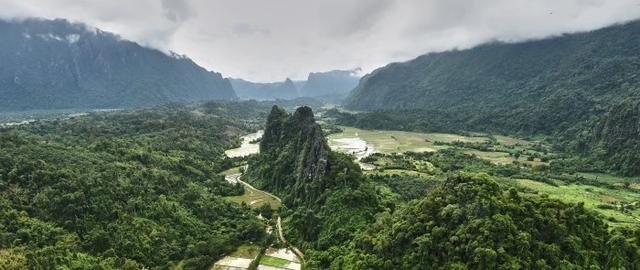
The World Wildlife Fund, or WWF, identified 224 new species discovered in the Greater Mekong area in 2020. The area includes Vietnam, Cambodia, Laos, Thailand and Myanmar. Among the species is a monkey with white circles around its eyes. The list also included numerous newly identified reptiles, frogs and newts(蝾螈), fish and 155 plant species.
A report by the WWF marks the need to protect rich wildlife habitats in the Mekong. The report said the discoveries demonstrate the strength of species to survive in environments threatened by deforestation(滥伐森林), disease and other harms like wildlife crime.
K. Yoganand, the WWF’s Mekong leader for Wildlife and Wildlife Crime, said that the new species represent “beautiful products of millions of years of evolution.” Today, however, they are “under intense threat,” Yoganand said, with many species disappearing before they are even described.
The newly discovered monkey is called the Popa langur(波帕叶猴). It got its name because it lives on the hillsides of Myanmar’s former Mt. Popa volcano. A new type of begonia(秋海棠) plant with reddish flowers and a berry-like fruit also was found in a hilly area of Myanmar. The area has a problem with illegal mining and logging.
Scientists have now identified more than 3,000 new species in the Mekong area since 1997, the WWF said. Scientists used measurements and samples from public collections to compare and identify important elements of the newly discovered animals and plants, the report said.
Researchers say identifying new species can be difficult and sometimes requires several different methods. In one case, frog calls and genetic data were combined to differentiate(区分) the Cardamom leaf-litter frog. The animal was found high in the Cardamom mountains in a protected wildlife area. Some species can be found in more than one country, including the bright orange twin slug snake.
本时文内容由奇速英语国际教育研究院原创编写,未经书面授权,禁止复制和任何商业用途,版权所有,侵权必究!(作者投稿及时文阅读定制请联系微信:18980471698)
1.What can we know about the Greater Mekong area?
A It is a newly-found place which is undeveloped.
B It is the home full of plants and animals in the wild.
C It is the research base of the World Wildlife Fund.
D It includes Vietnam, Cambodia, Thailand and Malaysia.
解析:选B。B 推理判断题。根据第一段内容及第二段的“A report by the WWF marks the need to protect rich wildlife habitats in the Mekong.”可知在大湄公河地区发现了200多种新物种,由此说明大湄公河地区是野生动植物的家园。故选B。
2.Why are many species disappearing according to K. Yoganand?
A They stop evolving.
B They are seriously threatened.
C They fail to be described by humans.
D They are faced with illegal mining and logging.
解析:选B。B 细节理解题。根据第三段的“they are ‘under intense threat,’ Yoganand said, with many species disappearing before they are even described.”可知很多物种消失是因为它们面临着巨大的威胁。故选B。
3.How are the new species usually identified according to the passage?
A Through different characteristics of a species.
B Through expert’s measurements and experience.
C By combining the wildlife’s voice and genetic data.
D By comparing the newly discovered species with the data collected.
解析:选D。D 细节理解题。根据第五段的“Scientists used measurements and samples from public collections to compare and identify important elements of the newly discovered animals and plants, the report said.”可知,科学家利用公共收集的测量数据和样本,对新发现的动植物的重要成分进行了比较和鉴定。故选D。
4.In which section of a newspaper may this text appear?
A Humans and Animals.
B World and Environment.
C Science and Technology.
D Environment and Ecology.
解析:选D。D 推理判断题。本文主要介绍了大湄公河地区新发现的物种情况,是与生态环境方面相关的内容。故选D。